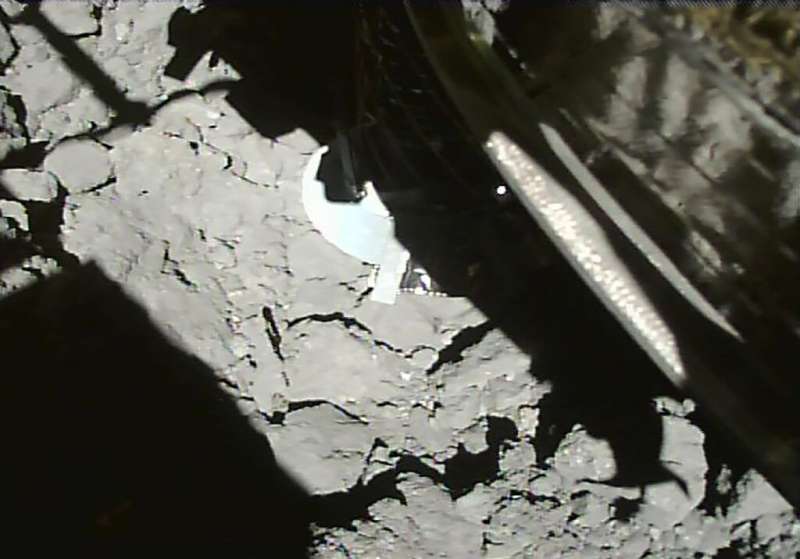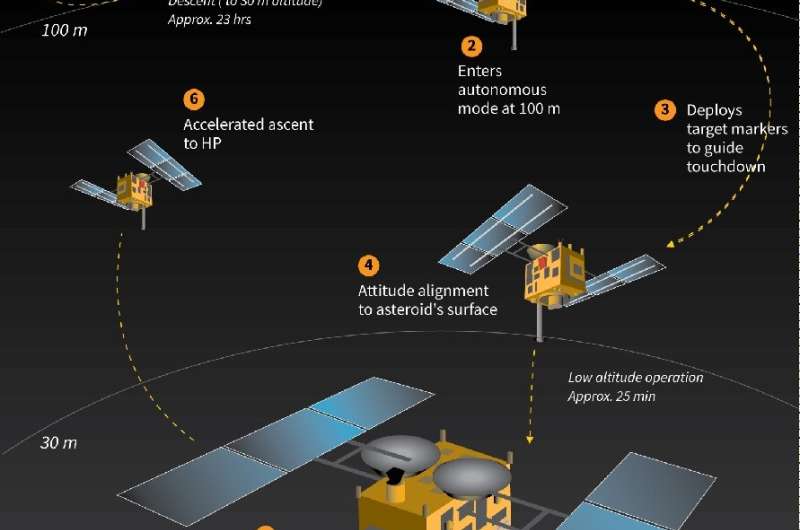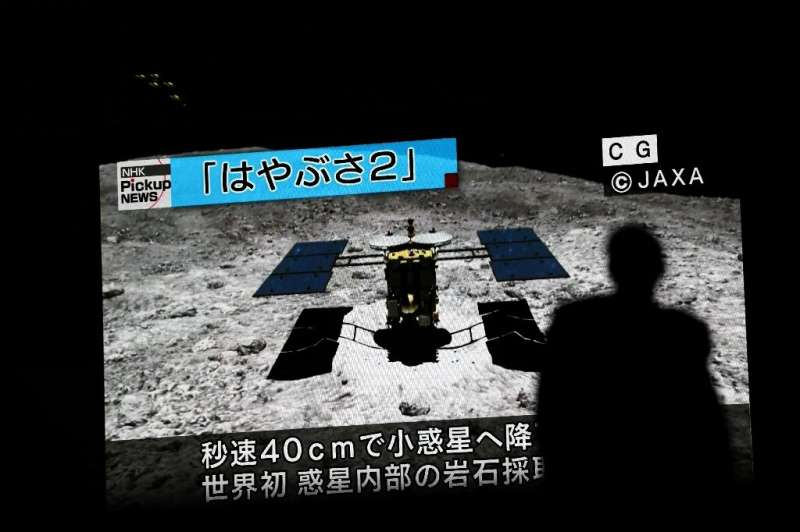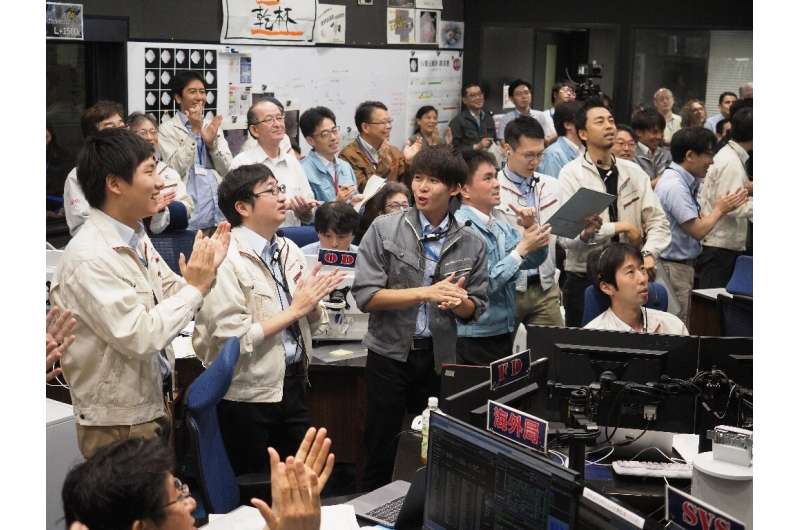Hayabusa2, a Japanese probe about the size of a large fridge, landed on the asteriod Ryugu on July 11 2019
Japan's Hayabusa2 space probe made its second touchdown on a distant asteroid on Thursday, in a bid to collect mineral samples that could reveal more about the solar system's evolution.
Here are five things to know about the ambitious expedition.
What is Hayabusa2's main goal?
The Japanese probe, about the size of a large fridge, arrived at its observation position above the asteroid Ryugu in June 2018.
Even its arrival was hailed as a success, likened to "shooting from Japan at a six-centimetre (two-inch) target in Brazil".
But its main mission was to observe and sample the surface of Ryugu, an asteroid some 300 million kilometres (187 million miles) from Earth that is believed to be relatively unchanged since the solar system was formed some 4.6 billion years ago.
Scientists hope samples from Ryugu will shed light on the birth of the solar system and its evolution, including whether elements from space helped give rise to life on Earth.
Project manager Yuichi Tsuda has described the mission as "a space science exploration that is unprecedented for humankind".
What are the key parts of its mission?
Hayabusa2 is equipped with various types of technology to help it observe and sample Ryugu, including a camera, that has beamed back images of the desolate asteroid's surface, and sensing equipment to record an array of data.
The Ryugu asteroid is some 300 million kilometres from Earth
Last year, it dispatched two tiny MINERVA-II rover robots as well as the French-German robot MASCOT onto the surface, for additional observations using equipment able to take pictures, measure temperatures and examine mineral samples.
"And then I found myself in a place like no place on Earth. A land full of wonder, mystery and danger!" the Twitter account for the MASCOT robot tweeted after it landed on Ryugu in October 2018.
In February, Hayabusa2 made its first brief touchdown on Ryugu, firing a projectile into the asteroid's surface to puff up dust for collection.
Then in April, the probe fired an explosive device called an "impactor" to create a crater on Ryugu's surface and bring up materials that have not been exposed to millennia of weathering.
On Thursday, Hayabusa2 landed on Ryugu again to collect those sub-surface samples.
How long will it take?
The Hayabusa2 mission was launched in December 2014, blasting into space on a Japanese rocket launched from the Tanegashima Space Centre.
It took it the Hayabusa2 space probe three-and-a-half years to get to the asteriod Ryugu, but the return journey should be significantly shorter
It took it three-and-a-half years to get to Ryugu, but the return journey should be significantly shorter because Earth and the asteroid will be closer when Hayabusa2 sets off for home, thanks to their orbit paths.
The probe is expected to drop a re-entry capsule containing its samples back to Earth in late 2020.
The six-year mission has a price tag of around 30 billion yen ($278 million).
What inspired the mission?
Hayabusa2 is the successor to the Japanese space agency's first asteroid explorer "Hayabusa", which means falcon in Japanese.
The earlier probe returned with dust samples from a smaller, potato-shaped asteroid in 2010, despite various setbacks during its epic seven-year odyssey, and was hailed as a scientific triumph.
Among the Hayabusa2 mission's innovations are its ability to create a crater on the surface of the asteroid, and its transport of the MASCOT robot.
Scientists hope samples from the asteriod Ryugu will shed light on the birth of the solar system
What is next for Hayabusa2?
With the latest landing, Hayabusa2 has completed the key tasks of its complex mission. It will continue to take images and readings while it remains around Ryugu but it is expected to head back to Earth next year.
There have been suggestions, however, that the probe could see its mission extended.
In a 2017 paper, project director Tsuda and another JAXA colleague wrote that Hayabusa2 might be able to carry out another asteroid fly-by after dropping off its re-entry capsule to Earth.
That could give scientists new information, potentially extending the probe's mission by hundreds of days, the pair wrote.
© 2019 AFP



























